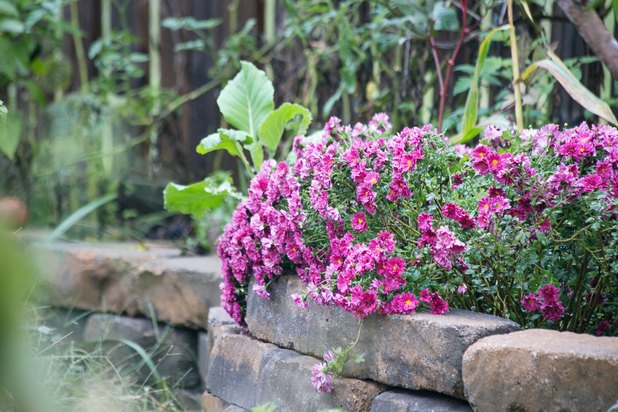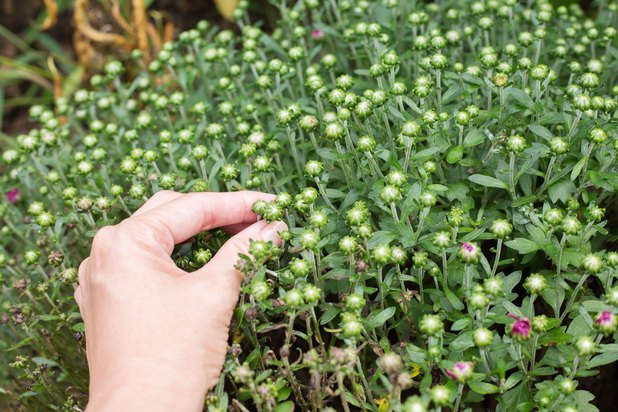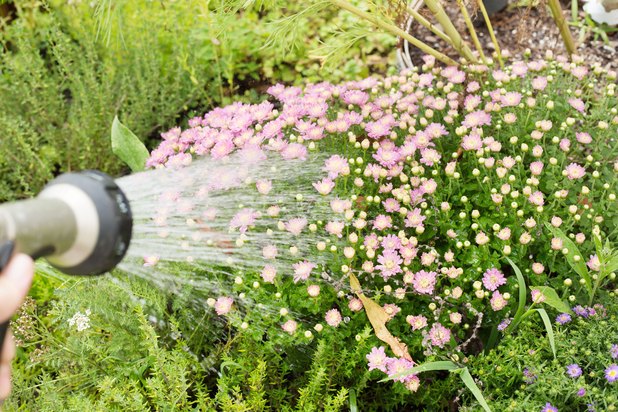Paphiopedilum Glanduliferum
Paphiopedilum species naturally occur among humus layers as terrestrials on the forest floor, while a few are true epiphytes and some are lithophytes. These sympodial orchids lack pseudobulbs. Instead, they grow robust shoots, each with several leaves; some are hemicryptophytes. The leaves can be short and rounded or long and narrow, and typically have a mottled patte...rn. When older shoots die, newer ones take over. Each new shoot only blooms once when it is fully grown, producing a raceme between the fleshy, succulent leaves. The roots are thick and fleshy. Potted plants form a tight lump of roots that, when untangled, can be up to 1 m long.
Members of this genus are considered highly collectible by orchid fanciers due to the curious and unusual form of their flowers. Along with Cypripedium, Mexipedium, Phragmipedium and Selenipedium, the genus is a member of the subfamily Cypripedioideae, commonly referred to as the "lady's-slippers" or "slipper orchids" due to the unusual shape of the pouch-like labellum of the flower. The pouch traps insects seeking nectar, and to leave again they have to climb up past the staminode, behind which they collect or deposit pollinia.
 |
Paphiopedilum Glanduliferum
Paphiopedilum Acmodontum
The paphiopedilums (genus Paphiopedilum) – often abbreviated Paph and colloquially known as paphs in horticulture – are flowering plants in the orchid family (Orchidaceae). It contains about 80 accepted species nowadays, some of which are natural hybrids. These slipper orchids are native to South China, India, Southeast Asia and the Pacific Islands, and form their own subtribe, the Paphiopedilinae.
|
 |
| Paphiopedilum Acmodontum |
Spiranthes
Spiranthes, commonly called Ladies'-tresses, is a genus of orchids
(family (Orchidaceae) belonging to the subfamily Orchidoideae.
It has a very wide, almost continuous distribution, mostly in temperate zones of the northern hemisphere: Europe, North Africa, Asia, Australia, New Guinea, the Americas and the Caribbean. It is a provincially endangered orchid, in North America it can be found in Manit...oba, Ontario and more than 20 American states. They grow in meadows, fields and savannas but are also found in forests, both on acid and calcareous soil. Most species tend to become weeds in disturbed areas, while they may be scarce in undisturbed areas.
Plants can grow to a height of 12 to 38 cm (4.5 to 15 inches). Spiranthes consists of perennial, terrestrial orchids with clustered, tuberous or rarely fibrous, fleshy roots. The leaves are basal or occasionally cauline (i.e. emerging from the stem). They are variable in shape. They range from broadly ovate to elliptic, or absent at flowering.
The flowering stem has foliaceous sheaths. The stem is erect and spiraling (as the name Spiranthes indicates). It carries persistent, sheathing bracts. The resupinate, tubular flowers are arranged in a more or less spirally twisted, showy or inconspicuous terminal spike. Their color is typically a shade of white or yellowish-white or even pink (as in Spiranthes sinensis).
This genus has undergone many taxonomic changes: originally Spiranthes contained all the species from the subtribe Spiranthinae. In 1920 Schlechter divided this genus in 24 genera. A revision by Williams in 1951 and by Schweinfurth in 1958, inflated the number of species of this genus again. Finally D. Szlachetko, with several studies in the 1990s, divided this genus in several genera, contained in 3 subtribes. During all these changes, there is only one species that has remained taxonomically unchanged: Spiranthes parksii.
It has a very wide, almost continuous distribution, mostly in temperate zones of the northern hemisphere: Europe, North Africa, Asia, Australia, New Guinea, the Americas and the Caribbean. It is a provincially endangered orchid, in North America it can be found in Manit...oba, Ontario and more than 20 American states. They grow in meadows, fields and savannas but are also found in forests, both on acid and calcareous soil. Most species tend to become weeds in disturbed areas, while they may be scarce in undisturbed areas.
Plants can grow to a height of 12 to 38 cm (4.5 to 15 inches). Spiranthes consists of perennial, terrestrial orchids with clustered, tuberous or rarely fibrous, fleshy roots. The leaves are basal or occasionally cauline (i.e. emerging from the stem). They are variable in shape. They range from broadly ovate to elliptic, or absent at flowering.
The flowering stem has foliaceous sheaths. The stem is erect and spiraling (as the name Spiranthes indicates). It carries persistent, sheathing bracts. The resupinate, tubular flowers are arranged in a more or less spirally twisted, showy or inconspicuous terminal spike. Their color is typically a shade of white or yellowish-white or even pink (as in Spiranthes sinensis).
This genus has undergone many taxonomic changes: originally Spiranthes contained all the species from the subtribe Spiranthinae. In 1920 Schlechter divided this genus in 24 genera. A revision by Williams in 1951 and by Schweinfurth in 1958, inflated the number of species of this genus again. Finally D. Szlachetko, with several studies in the 1990s, divided this genus in several genera, contained in 3 subtribes. During all these changes, there is only one species that has remained taxonomically unchanged: Spiranthes parksii.
 |
| Spiranthes |
Warty Hammer Orchid,
Warty Hammer Orchid, a plant with an amazingly unflower-like flower that attracts a particular wasp, which is deceived into attempting to mate with the flower. Darwin's method of studying the pollination of other orchids is described, and used to illustrate how evolutionary biologists can test hypotheses on the adaptive value of the attributes of living things. Some may say it's ugly looking, but it's depends on you.
 |
| Warty Hammer Orchid
Oncophyllum globuliforme (Nicholls)
Oncophyllum globuliforme (Nicholls) (previously named Bulbophyllum globuliforme), the Green Bead Orchid, or Miniature Moss-orchid is an epiphytic orchid that occurs in subtropical rainforest in Queensland and New South Wales, Australia, in a variety of habitats including warm temperate rainforest, dry rainforest and wet sclerophyll forests at an altitude of 100-900 metres.
One of the smallest orchid species known, the tiny pseudobulbs are about the size of a pinhead and each has a tiny reduced thread-like leaf at the apex. It can form quite extensive mats on tree trunks. Flowering occurs mainly from October to November and May to August. Flowers are cream with yellow labellum, rarely flushed with red and cream labellum, and are carried on a solitary stem in the axils of stem bracts. It grows on bark and forms a thick mat, on the trunk and larger branches of the Hoop Pine (Araucaria cunninghamii), and is often mistaken for moss or lichen. |
 |
| Oncophyllum Globuliforme (Nicholls)
The Giant Orchid
The Giant Orchid, Grammatophyllum speciosum, also called Tiger Orchid, Sugar Cane Orchid or Queen of the Orchids, is the world's largest orchid. It is native to New Guinea, Indonesia, Malaysia and Philippines, growing in crotches of large trees on exposed areas of the lowland tropical rainforest.
It is an epiphytic and occasionally a lithophytic plant, forming spectacular root bundles. Its cylindric pseudobulbs can grow to a length of 2.5 m. It can grow to gigantic clusters weighing from several hundred kilograms to more than one ton. A Giant Orchid weighing two tons was one of the highlights in the 1851 exhibition at the Crystal Palace in London. Each raceme can grow to a height of 3m, bearing up to eighty flowers, each 10 cm wide. The flowers are yellow colored with maroon or dark red spots. These flowers are remarkable, since the lowest flowers have no lip. It blooms only once every two to four years. This orchid can, however, remain in bloom for up to two months. Because of its enormous size, it is rarely cultivated. |
 |
| The Giant Orchid |
Paphiopedilum Callosum The genus name Paphiopedilum was established by Ernst Hugo Heinrich Pfitzer in 1886; it is derived from Paphos (a city on Cyprus) and Ancient Greek pedilon "slipper". Ironically, no paphiopedilum occurs on Cyprus – at least not as the genus is understood today. But it was long mixed up with its Holarctic relative Cypripedium, which indeed grows in the Mediterranean region. Paphiopedilum was finally decided to be a valid taxon in 1959, but its use has become restricted to eastern Asian species in our time.
 |
| Paphiopedilum Callosum |
 |
| Common Donkey Orchid |
 |
| Common Spider Orchid taken by Tina Australia |
 |
| Black Orchids - Cymbidium Kiwi Midnight 'Geyserland' |






